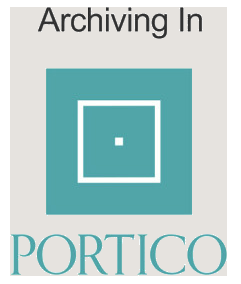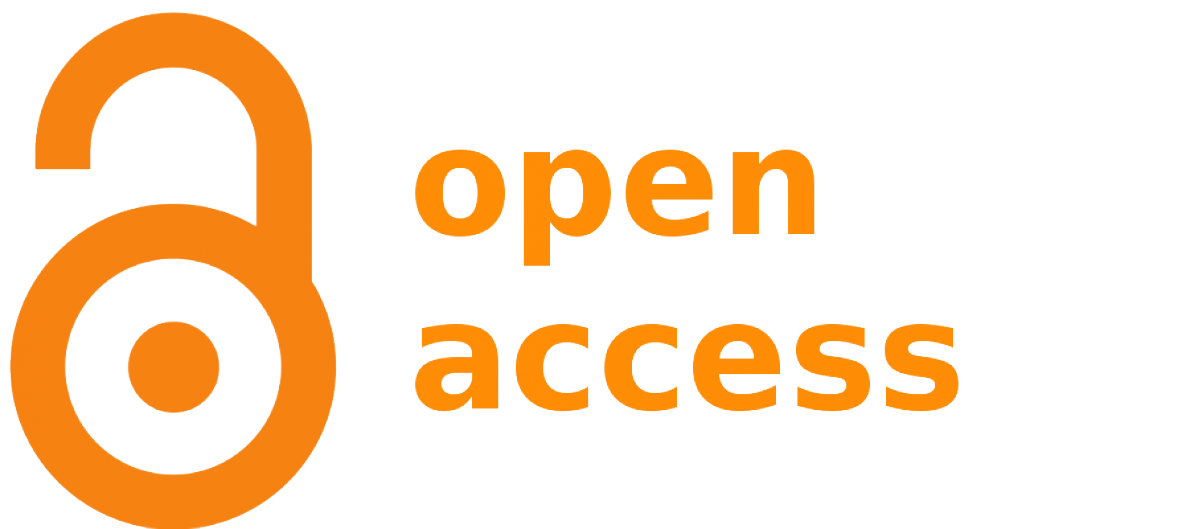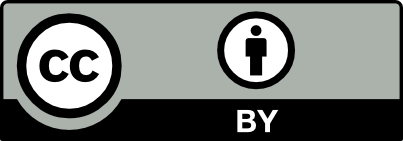Policies
Peer Review Process and Type
Peer Reviewer Approval Policy and Workflow
Open Access Copyright Policy
Author Policies
Student and Staff Editors Policies
Publication Ethics
Committee on Publication Ethics (COPE)
Competing Interests
Funding Disclosure
Ethics Statement
Dual Use Research of Concern
Data and Materials Sharing
Peer Review Process and type:
CRMJ uses a double-blind peer-review process. This means that the journal’s peer-reviewers do not know the names and affiliations of the authors and that the reviewer reports provided to authors are anonymous. Each article will be reviewed by two faculty members and one medical student or allied health professional student who has been trained in the process of peer-review.
If you are interested in serving as a peer-reviewer, please email us at CRMJ@rowan.edu.
"Policies and Procedures" by PeerJ is licensed under CC BY 4.0
Peer Reviewer Approval Policy and Workflow:
The Cooper Rowan Medical Journal (CRMJ) maintains a large pool of potential peer-reviewers. Potential peer reviewers are invited to apply via an online web form available on the journal’s website and via the following link:
https://go.rowan.edu/CRJCSMPeerReviewerApplication
Information submitted via this web form will be used for internal purposes only and not shared with outside parties. A master list of peer reviewers will be maintained on Google sheets documents and within the online software used to host the journal:
Who can serve as a peer reviewer?
CRMJ has a minimum requirement that its peer reviewers are a current clinician, faculty member, allied health professional, medical student, resident, fellow, or graduate student studying health science related subject. Every article reviewed for CRMJ is reviewed by both a student and a current medical professional. Those applying to serve as a peer reviewer without prior experience will be required to undergo brief training on how to conduct peer review for CRMJ. This training will be provided either in person or remotely by CRMJ staff via online video training:
https://go.rowan.edu/CRJCSMPEERREVIEWTRAINING
Open Access Copyright Policy
The Cooper Rowan Medical Journal is proudly a “Gold Open Access” peer reviewed journal. We DO NOT currently charge an article processing
fee to authors upon publication of their works. CRMJ operates as a non-profit, volunteer and donation-based publication.
All articles published in the Cooper Rowan Medical Journal are published under a Creative Commons license: Creative Commons Attribution 4.0 International (CC BY 4.0) License
With this license, Authors retain copyright, but allow any user to share, copy, distribute, transmit, adapt and make commercial use of the work
without needing to provide additional permission, provided appropriate attribution is made to the original CRMJ author(‘s).
By using this license, all articles meet or exceed all funder and institutional requirements for being considered Open Access.
Authors cannot use copyrighted material within their article, such as previously published figures, unless that material has also been made
available under a similarly liberal license or been given permission for reuse by the owners.
Adapted partially from: "Policies and Procedures" by PeerJ is licensed under CC BY 4.0
Author Policies
Authors Eligible to Publish in CRMJ include:
- The first author must be a current healthcare professional student or resident/fellow or was so at the time the study/work being submitted were started. Faculty members are allowed to be co-authors, as long as a student/resident/fellow is either the primary or senior author. Papers with all student authors or a student as the senior author will also be considered. Our definition of a student includes:
- Medical students (MD and DO)
- Residents/fellows (any year or specialty)
- Allied health professional graduate-level students including those studying: nursing, social work, physical therapy, pharmaceutical sciences, public health, occupational health, health policy, nutrition, health education, healthcare systems, or other health-related graduate programs.
- PhD students in a health science program: biology, biochemistry, biophysics, exercise science, genetic counseling, or psychology.
- All primary authors must have a free ORCID and supply it with their submission.
- If you have any questions, please contact us: CRMJ@rowan.edu
Corresponding Author’s Role and Responsibilities are to:
- The corresponding author should have a permanent email address and be one of the faculty authors.
- Inform all co-authors of the submission of the manuscript to the journal (note: each co-author will receive a confirmation email upon submission and will need to confirm their authorship).
- Ensure that the manuscript is in full adherence with all journal policies (including such items as publication ethics, materials deposition, etc). Additionally, ensure that all co-authors are aware of, and in compliance with, all journal policies and procedures.
- Manage all correspondence between the journal and all co-authors, keeping the full co-author group apprised of the manuscript progress.
- Designate a substitute correspondent for times of unavailability.
- Post Publication: Respond to all queries pertaining to the published manuscript, provide data and materials, as requested.
- The submission must be created (and completed) by one of the co-authors, not by an agency or by some other individual who is not one of the co-authors.
- CRMJ adheres to the ICMJE uniform requirements of authorship: All authors on an article must meet these requirements, which are paraphrased below:
- Authorship credit should be based on 1) substantial contributions to conception and design, acquisition of data, or analysis and interpretation of data; 2) drafting the article or revising it critically for important intellectual content; and 3) final approval of the version to be published. Authors should meet all three conditions.
- When a large, multicenter group has conducted the work, the group should identify the individuals who accept direct responsibility for the manuscript. These individuals should fully meet the criteria for authorship/contributorship defined above, and editors will ask these individuals to complete journal-specific author and conflict-of-interest disclosure forms. When submitting a manuscript authored by a group, the corresponding author should clearly indicate the preferred citation and identify all individual authors as well as the group name. Journals generally list other members of the group in the Acknowledgments. The NLM indexes the group name and the names of individuals the group has identified as being directly responsible for the manuscript; it also lists the names of collaborators if they are listed in Acknowledgments.
- Acquisition of funding, collection of data, or general supervision of the research group alone does not constitute authorship.
- All persons designated as authors should qualify for authorship, and all those who qualify should be listed.
- Each author should have participated sufficiently in the work to take public responsibility for appropriate portions of the content.
"Policies and Procedures" by PeerJ is licensed under CC BY 40
Student and Staff Editors Policies
Who and how can one serve as an Editorial Board member?
All Cooper Rowan Medical Journal (CRMJ) Editorial Board (EB) members are appointed by the editor-in-chief for a one year term that is renewed automatically unless the EB member chooses to step down. Nominations for EB appointments come from a variety of sources including self-nominations, the current EB, journal authors, and readers. The EB should constitute an appropriate interdisciplinary mix from a wide range of biomedical science and healthcare, and medical education disciplines. CRMJ strives to have an EB that consists of members from a diverse background and inclusive of all people, regardless of race, color, religious creed, national origin, ancestry, sex, sexual orientation, age, veteran status, and/or disability.
Being an EB member for CRMJ means that actual work is required, so EB members should have appropriate time and motivation. The Editorial Executive Committee reserves the right to remove editors who do not fulfill the duties of their positions to the EB.
Main responsibilities include, but are not limited to:
- General advocacy for open access publishing and publishing high-quality work in CRMJ specifically
- Strategic and operational advice (unsolicited, as well as in editorial board meetings)
- Guiding papers in their area of expertise through the peer-review process
CRMJ has a minimum requirement that its peer reviewers are a current clinician, faculty member, allied health professional, medical student, resident, fellow, or graduate student studying health science related subjects.
EB members will preferably have prior experience conducting peer review. If an EB member has no prior experience, they will be required to undergo brief training on how to conduct peer review for CRMJ. This training will be provided either in person or remotely by CRMJ staff via online video training: https://go.rowan.edu/CRJCSMPEERREVIEWTRAINING
Every EB member will be required to review the Committee on Publication Ethics: https://publicationethics.org/files/u2/Best_Practice.pdf
Individuals interested in sitting on the Editorial Board should contact the current editorial board staff by email CRMJ@rowan.edu.
Note: Some of these policies were adapted from the following document created by the editorial staff of the Journal of Participatory Medicine: https://jopm.jmir.org/about/editorialPolicies#custom3
Publication Ethics
- CRMJ adheres to the prevailing industry standards and procedures for investigating publication ethics.
- CRMJ does not allow dual publication (the same material published twice in the peer reviewed literature), or dual submission (the same material simultaneously submitted to more than one journal).
- Specifically, CRMJ does not tolerate plagiarism, data or figure manipulation, knowingly providing incorrect information, copyright infringement, inaccurate author attributions, attempts to inappropriately manipulate the peer review process, failures to declare conflicts of interest, fraud, and libel. CRMJ runs all accepted manuscripts through Similarity Check software, (A service provided by Crossref and powered by iThenticate).. This list is not exhaustive - if there is uncertainty of what constitutes such actions, then more resources may be found at the Committee on Publication Ethics (COPE), the Council of Science Editors (CSE), or the World Association of Medical Editors (WAME).
- CRMJ will rigorously enforce our standards and follow-up on any transgressions. In extreme cases, this may call for individuals to be reported to their institutions and/or for manuscripts to be retracted. Any complaints should be directed to CRMJ@rowan.edu
"Policies and Procedures" by PeerJ is licensed under CC BY 4.0
Committee on Publication Ethics (COPE)
CRMJ adheres to the COPE Code of Conduct and Best Practice Guidelines. We follow recommended COPE procedures whenever we are alerted to an issue which requires investigation.
Competing Interests
- CRMJ requires that all parties involved in a publication (i.e. the authors, reviewers and academic editors) should transparently declare any potential Competing Interests (also known as Conflicts of Interest). The disclosure of a Competing Interest does not necessarily mean that there is an issue to be addressed; it simply ensures that all parties are appropriately informed of any relevant considerations while they work on the submission. Reviewers are expected to consider any competing interests before agreeing to review, and to confirm that they have no competing interests before submitting their review. Editors are expected to recuse themselves from handling a manuscript if they feel they have a competing interest.
- Examples of Competing Interests include, but are not limited to: possible financial benefits if the manuscript is published; prior working, or personal, relationships with any of the authors; patent activity on the results; consultancy activity around the results; personal material or financial gain (such as free travel, gifts, etc.) relating to the work; personal convictions (religious, political, etc.) which may have a bearing on the work, and so on.
- While possible financial benefits should appear here, actual funding sources (institutional, corporate, grants, etc.) should be detailed in the funding disclosure statement.
"Policies and Procedures" by PeerJ is licensed under CC BY 4.0
Funding Disclosure
- Separately from declaring Competing Interests, CRMJ also requires that authors disclose the financing which made their work possible.
- The Funding statement is published in the final article. This disclosure provides added transparency.
Ethics Statement
- CRMJ requires that authors provide an Ethics statement, which details the relevant ethical standards that were met when conducting the research.
- Ethics statements are required whenever research is conducted on humans or human tissue; on animals or animal tissue; when conducting field studies; or whenever the approval of an Institutional Review Board (IRB) was required. Where IRB approval was required, the authors must provide an ethics statement as part of their ‘Methods’ section, including the name of the granting organization. If IRB approval was not required, a statement of exemption is required in the ‘Methods’ section of the manuscript.
- Patient consent is required for all case reports, regardless of whether identifiable information is being submitted. A one-sentence acknowledgement stating that such consent has been obtained by the authors should be included in the manuscript.
- AI tools cannot meet the requirements for authorship as they cannot take responsibility for the submitted work. As non-legal entities, they cannot assert the presence or absence of conflicts of interest nor manage copyright and license agreements. Authors who use AI tools in the writing of a manuscript, production of images or graphical elements of the paper, or in the collection and analysis of data, must be transparent in disclosing in the Materials and Methods (or similar section) of the paper how the AI tool was used and which tool was used. Authors are fully responsible for the content of their manuscript, even those parts produced by an AI tool, and are thus liable for any breach of publication ethics.
"Policies and Procedures" by PeerJ is licensed under CC BY 4.0
Dual Use Research of Concern
- 'Dual Use Research of Concern' is defined by the National Science Advisory Board for Biosecurity (NSABB) as any "biological research with legitimate scientific purpose that may be misused to pose a biologic threat to public health and/or national security."
- On a case by case basis, CRMJ reserves the right to consider whether or not a submission could be considered as sensitive in this context.
- If an author, editor or reviewer feels that a submission may be subject to concerns surrounding dual use then it is incumbent on them to report this concern to staff.
"Policies and Procedures" by PeerJ is licensed under CC BY 4.0
Data and Materials Sharing
CRMJ is committed to improving scholarly communications and as part of this commitment, all authors are encouraged, but not required, to make materials, code, data and associated protocols available to readers. The preferred manner by which to meet this requirement is to publicly deposit, as noted below. Any supporting data sets for which there are no suitable repositories may be made available as publishable Supplemental Information files by CRMJ.
- FORCE11 has developed a useful overview for reporting in the life sciences. Please review these recommendations before submitting. Recommendations cover the following areas: Sequence Molecule Identification, Reporting of Antibodies, Reporting of Model Organisms, Reporting of Cell Lines, Constructs, and Reporting of Knockdown Reagents.
- Large domain-specific datasets should be deposited in a public repository (e.g. GenBank, INSDC, Protein Data Bank, UK Stem Cell Bank, Addgene, RIKEN Bioresource Centre) and an accession number or access address provided in the published article. Additional databases may be found by consulting the BioSharing database, re3data.org, or the NIH Data Sharing Repositories list.
- Where suitable domain-specific repositories do not exist, authors may deposit in either Dryad, Dataverse, the Open Science Framework, or an institutional repository and provide the access information with the manuscript. Alternately, authors may choose to deposit non-standard data (including figures, posters, rich media) on Figshare. In all cases, the DOI reference (where applicable) should be provided in the article.
- Data should be provided in an appropriate, machine-readable format. Note: formats such as PDF, Powerpoint, and images of tables etc. are not considered suitable for raw data sharing.
- Where appropriate, physical materials (for example, mutant seed stock, or paleontological specimens), should be deposited in recognized centers (for example, seed stock centers for the former, or recognized museums or institutions for the latter).
- A non-exhaustive list of repositories for physical materials, such as cell lines or mutant strains includes: the RIKEN Bioresource Centre; the Jackson Laboratory; the European Mouse Mutant Archive; the European Conditional Mouse Mutagenesis Program; the American Type Culture Collection; the Knockout Mouse Project; Addgene; the Mutant Mouse Regional Resource Centers.
- Where novel research compounds are used, their chemical identity must be disclosed.
- Publications using commercial antibodies should report the supplying company and code number for all antibodies used. We recommend reporting using the following format:
- The following antibodies were used: Mouse anti-protein A monoclonal antibody (company E, catalogue number #1000) was used for Western blotting with human cells, as validated in (figure X or reference Y or validation profile Z).
- In accordance with the principles in Sharing Publication-Related Data and Materials (National Academies Press, 2003), research using proprietary data must also evaluate a piece of comparable public data, if the authors cannot or do not make the proprietary data available.
- For software papers, 'materials' are taken to mean the source code and/or relevant software components required to run the software and reproduce the reported results. The software should be open source, made available under an appropriate license, and deposited in an appropriate archive. Data used to validate a software tool is subject to the same sharing requirements as any data in this publication.
- When available, accession/deposition reference numbers should be provided in the manuscript.
- Some repositories offer authors the option to host data associated with a manuscript confidentially and provide anonymous access to CRMJ for reviewing purposes. Therefore, if allowed by the repository, it is the author's responsibility to coordinate prompt public release of the data with the repository on the publication date, if kept confidential during peer review.
"Policies and Procedures" by PeerJ is licensed under CC BY 4.0









